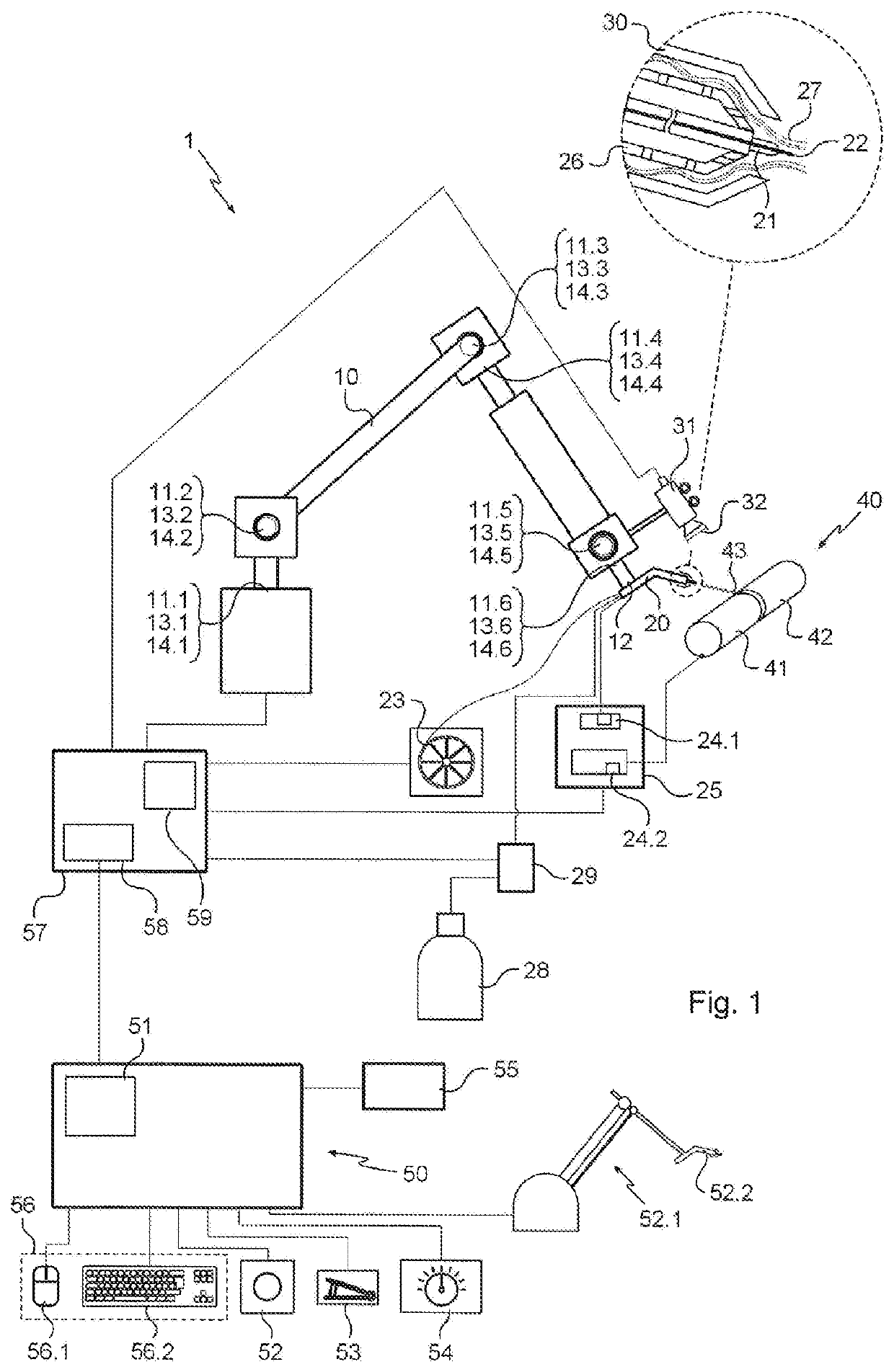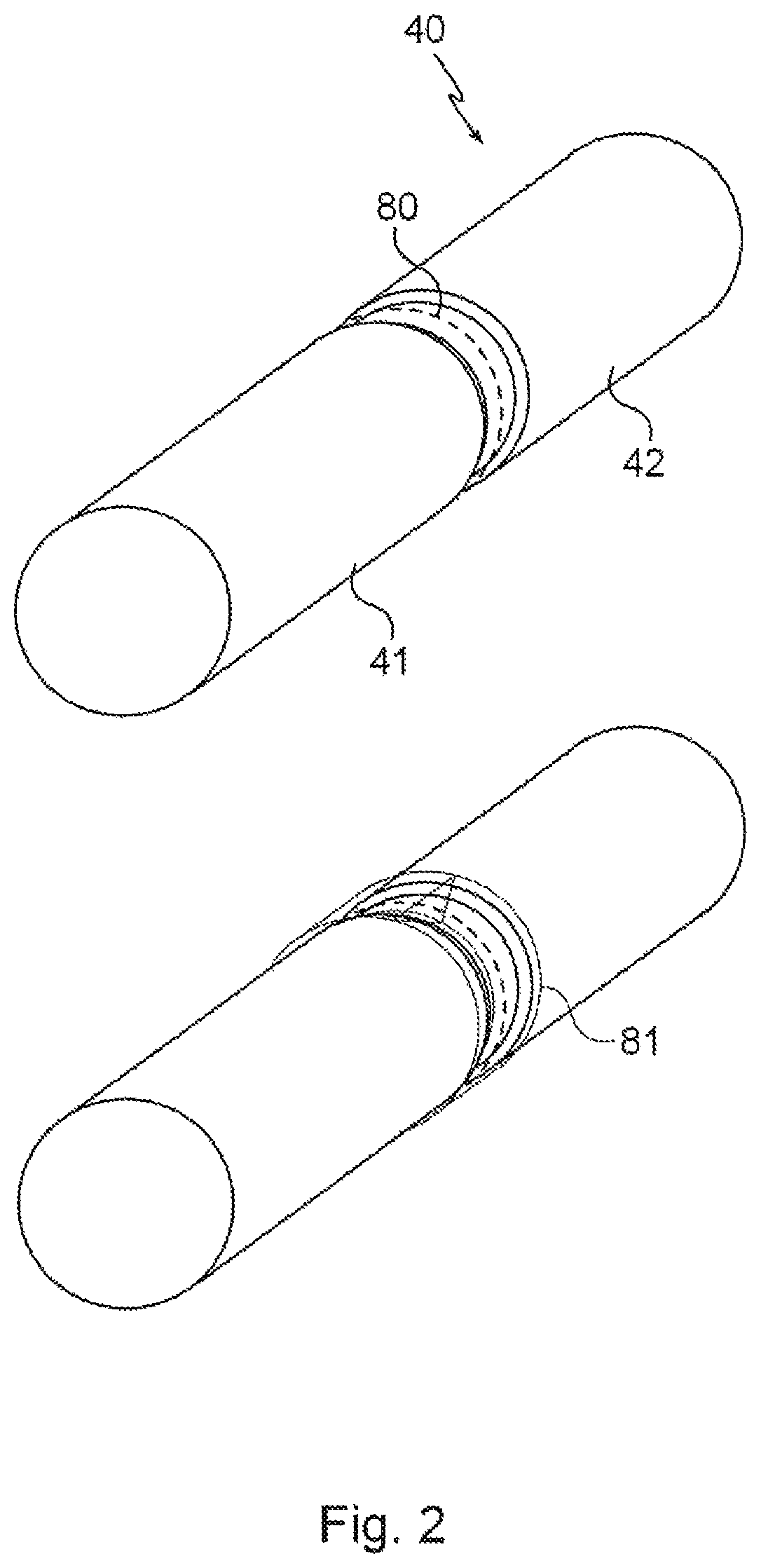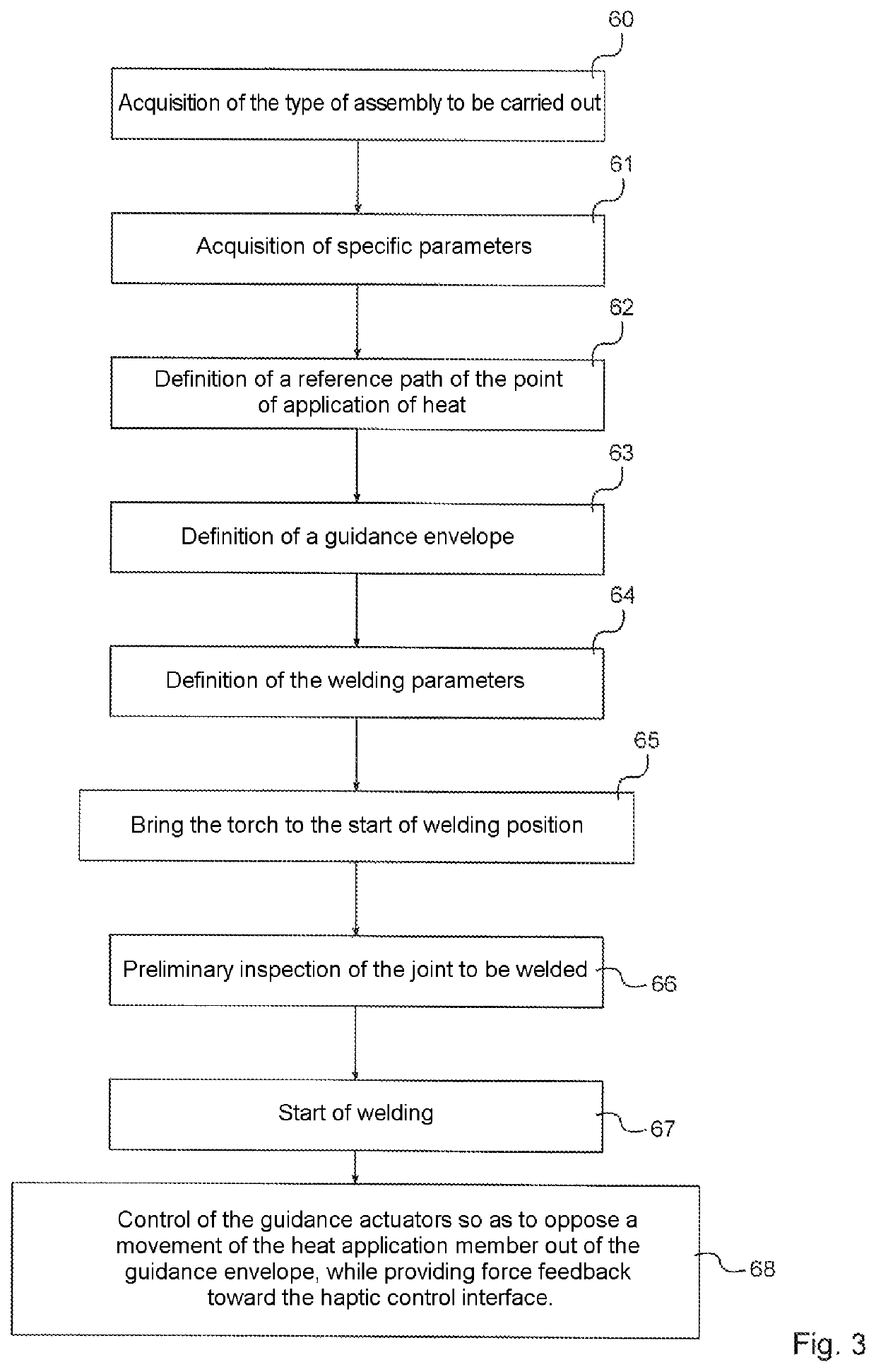Remotely operated manual welding method and welding robot implementing such a method
a remote-operated, welding robot technology, applied in the direction of manipulators, process and machine control, instruments, etc., can solve the problems of operator exposure to welding fumes, difficulty in automating the degree of expertise, and inconvenient positions of operators, so as to improve the quality of manual assemblies
- Summary
- Abstract
- Description
- Claims
- Application Information
AI Technical Summary
Benefits of technology
Problems solved by technology
Method used
Image
Examples
Embodiment Construction
[0049]With reference to FIG. 1, the method is executed by means of a remotely operated robot, designated in a general way by the number 1, comprising a polar arm 10 with six axes, having six joints 11.1 to 11.6 of the rotary type.
[0050]A MIG welding torch 20 is mounted at the end 12 of the arm 10, and comprises a tubular guide 21 for a metal wire 22 running from a controlled unwinder 23. The guide 21 is connected to the positive terminal 24.1 of an electric welding generator 25. An assembly 40 of two metal tubes 41 and 42 is, for its part, connected to a second, ground terminal 24.2 of the generator 25. Thus the wire 22 acts as an electrode, and enables an electric arc to be struck, delivering heat to a point of application of heat 43 on the assembly 40. The MIG welding torch 20 also comprises a diffuser 26 for supplying shielding gas 27, argon in this case, from a reservoir 28 to which an expansion valve / flow meter assembly 29 is fitted. A tubular nozzle 30 extends around the guide...
PUM
 Login to View More
Login to View More Abstract
Description
Claims
Application Information
 Login to View More
Login to View More - R&D
- Intellectual Property
- Life Sciences
- Materials
- Tech Scout
- Unparalleled Data Quality
- Higher Quality Content
- 60% Fewer Hallucinations
Browse by: Latest US Patents, China's latest patents, Technical Efficacy Thesaurus, Application Domain, Technology Topic, Popular Technical Reports.
© 2025 PatSnap. All rights reserved.Legal|Privacy policy|Modern Slavery Act Transparency Statement|Sitemap|About US| Contact US: help@patsnap.com



